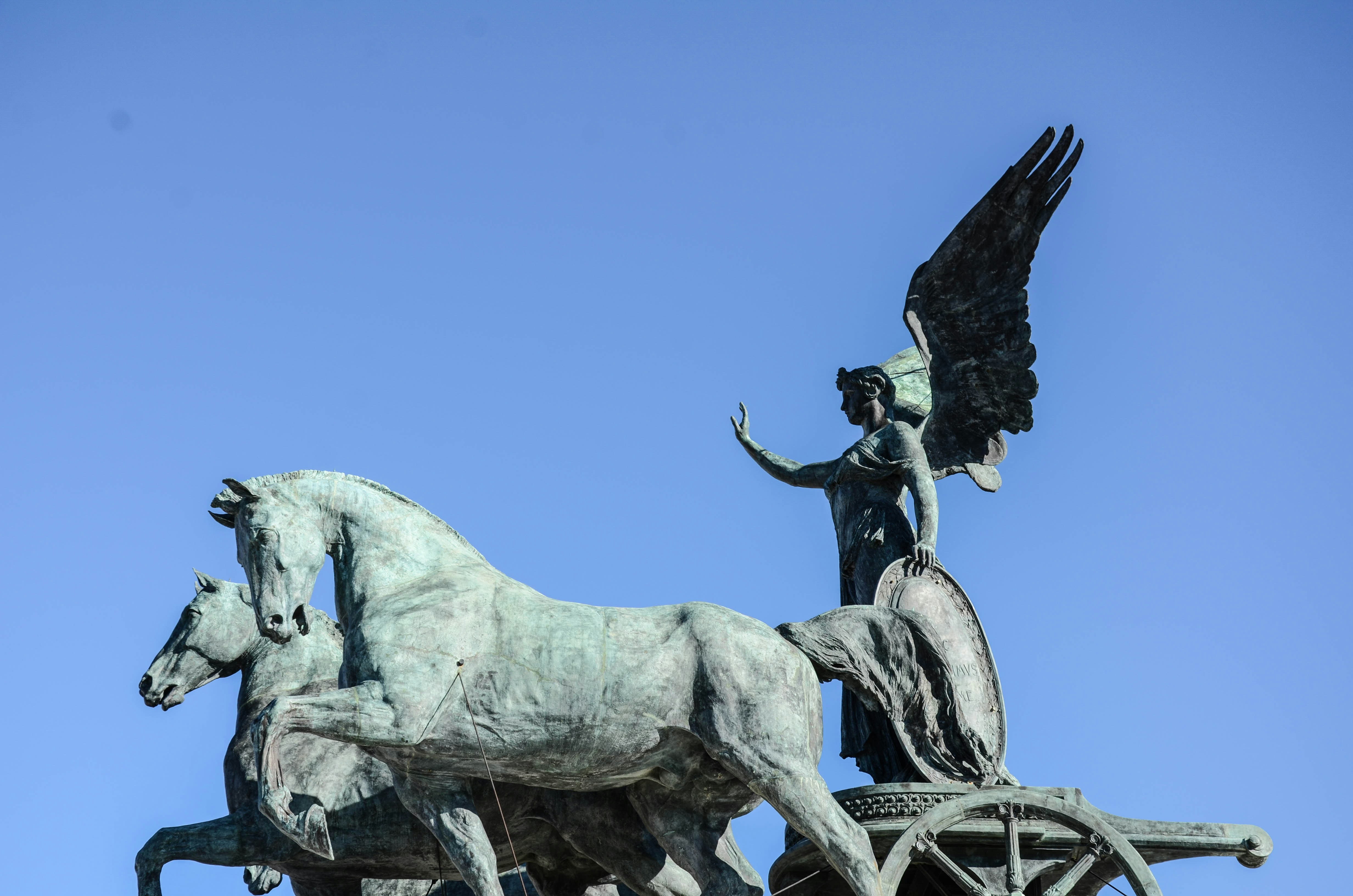
A Pictorial Tour of Ravenna
For 75 years Ravenna was the capital of the Roman Empire and the epicenter of Roman imperial power. With the Fall of the Roman Empire, however, Ravenna declined in population, and today it is a small Italian city of 400,000 people. Yet many of the remnants of its imperial glory remain intact. We visited in September of 2022. This is what we found.
Continue reading
How the Roman Holiday of Saturnalia Morphed into Christmas
Many of the traditions of Saturnalia have come down to us in the form of Christmas traditions. Even Christmas wreaths and Christmas lights were originally parts of Saturnalia. The parallels are surprising. But why, when so many other Christian observances are so somber and solemn, does Christmas retain so many of the merrymaking features of a big, rowdy party?
Continue reading
How the Abandonment of the Roman Virtues Led to the Downfall of the Empire
“Values” are the glue that hold a society together. In the absence of shared values a society becomes like a cancer, the constituent cells turning against each other at the expense of the organism that gives them life. In modern Western societies values have been traditionally conferred through religious traditions. Such was the case in the Roman Empire—until it wasn’t.
Continue reading
The Outrageously Bizarre Ideas the Ancient Romans Had About India
At its greatest extent the Roman Empire stretched 2,500 miles east from Rome to the Red Sea, but beyond the Red Sea lay a mysterious world the Romans knew almost nothing about. So vague and shadowy was India to the Romans that their theories of what lived there were truly bizarre. This video shows just how far off the mark they were.
Continue reading
10 Modern Advancements the Romans Had First
Many modern advancements we rely on as part of our every day lives were invented in the last 150 years, but a surprising number of those actually existed in the Roman Empire more than 2,000 years ago and have only just been reinvented in the past century and a half. The Romans were far more advanced than you may think. Here are some surprising examples...
Continue reading
How I Created The Maps For My Novels About the Fall of Rome
One of the more challenging maps I had to come up with was a map of the Huns’ invasion route as they moved west across central Europe into Gaul. To construct the map I had to locate each town the Huns sacked along the way, and there were a lot of them. Then I had to figure out what those towns are called today...
Continue reading
The Post-Apocalyptic World of the Roman Empire After the Fall
Today, most post-apocalyptic scenarios paint a picture of a bleak future, but the post-apocalyptic nightmare that occurred in Europe after the fall of the Roman Empire is a part of the past that has been largely forgotten.
Continue reading
10 Striking Parallels Between the Star Wars Saga and the Fall of the Roman Empire
George Lucas the creator of Star Wars said, “I love history, so while the psychological basis of ‘Star Wars’ is mythological, the political and social bases are historical.” Indeed, many aspects of the Star Wars myth are reflected in the history of Rome’s decline and fall. Here are 10 striking parallels between the Star Wars saga and the Fall of Rome.
Continue reading
A Pictorial Visit to the Ruins of Aquileia
Aquileia was one of the most prosperous cities in the Roman Empire until it was destroyed by the Huns in 452 AD and almost completely abandoned. Archeological excavations in the late 19th century uncovered an astonishing array of artifacts that were collected at the site. We visited in September 2025. This is what we saw.
Continue reading
See How the Roman Empire Became Modern Europe
As the Roman Empire crumbled, powerful forces established new kingdoms across Europe. This video shows how it happened, depicting the Migration Period through animated maps and showing the migratory movements of the peoples who would provide the foundations of modern Europe.
Continue reading
What the Fall of the Roman Empire Has Taught Me About Military Expansionism
Over the course of several centuries, a policy of military expansion became Rome’s defining mission. In the end, however, it was unsustainable, and its cessation brought reversals that led to the Empire’s collapse.
Continue reading
The Evolution of a Book Cover
The covers for novels don’t just emerge full blown. They begin with an idea that is turned over and massaged until it takes form, and then they go through several renditions until they become the final product. This was the journey the artwork for “The Desecration of Fortune” took in becoming the final cover for the book.
Continue reading